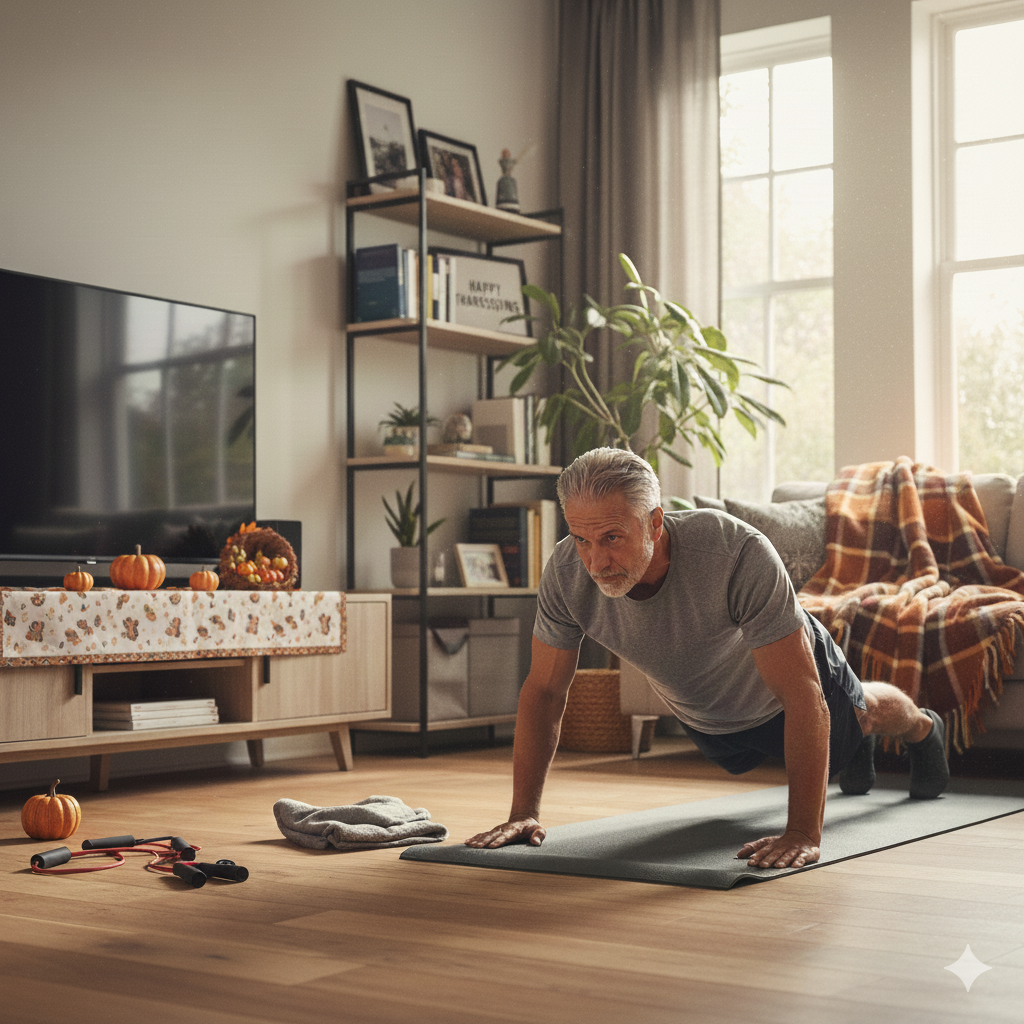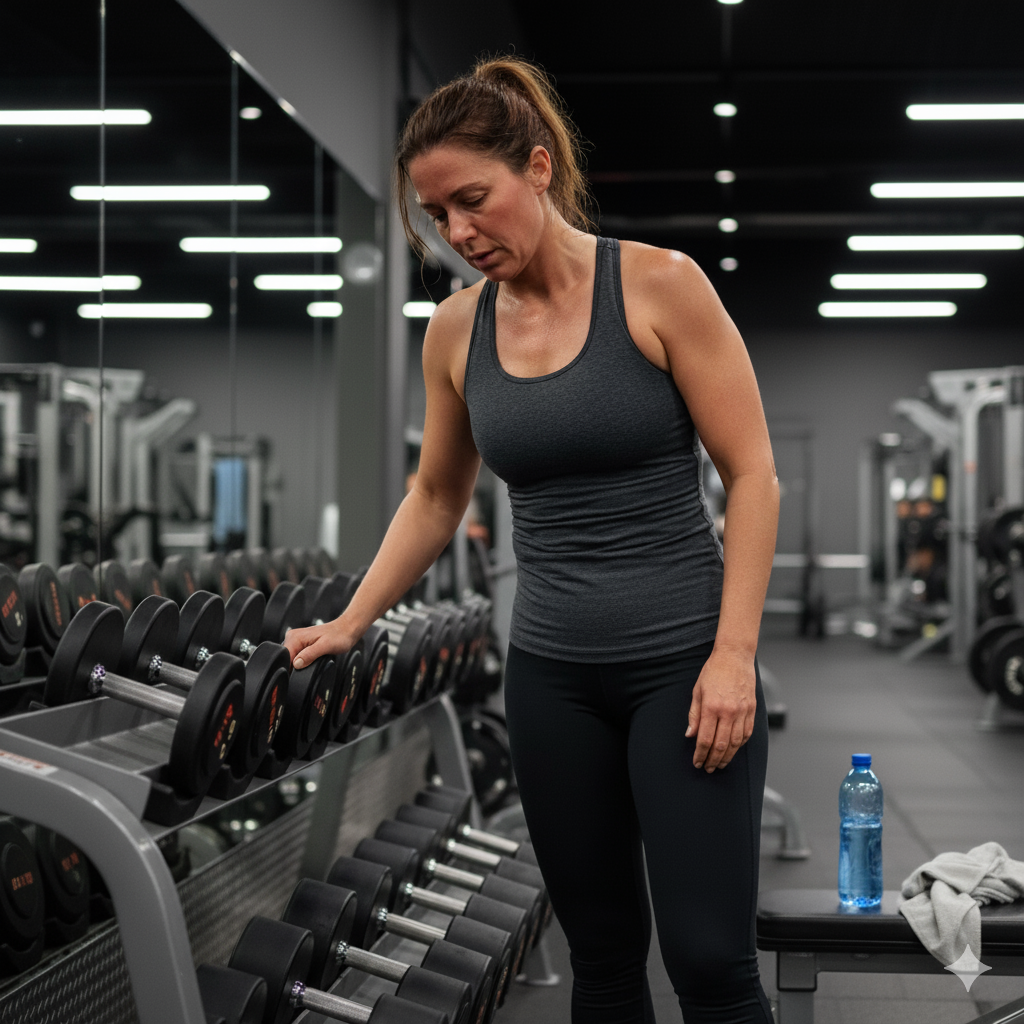WELCOME TO
Our Blog


Feeling the pressure of the crazy, expensive holiday season? It seems counterintuitive to add a personal trainer to your budget now, but this is precisely the best time to invest in one! Why? The holidays are a perfect storm of stress, endless obligations, and rich food, making consistency nearly impossible. A personal trainer is your ultimate accountability partner. They ensure your fitness doesn't fall off the cliff before January 1st. Your trainer will design quick, efficient workouts that maximize your limited time so you can still fit in shopping and parties. They'll also help you set realistic goals—like maintaining your weight or fitness level through the Holidays, not losing 10 pounds—which drastically reduces stress and guilt. Don't wait for the crowded New Year's rush. By starting now, you'll enter January with momentum and confidence. Treat your health as a priority this season; it's one investment that truly pays off.

Before the turkey coma sets in and the pumpkin pie beckons, give thanks to your body with a quick, metabolism-boosting workout! Thanksgiving morning is the perfect time for a “Pre-Feast Fire-Up”, ensuring you start the day feeling strong and energized—no gym or equipment needed. Here is a 20-minute AMRAP (As Many Rounds as Possible) circuit right in your living room. The goal is simple: maximize intensity in a short time to ignite your fat-burning furnace. The Circuit (Complete 1 round, rest 60 seconds, repeat for 20 minutes): 10 Squat Jumps:** Explode up for power. 10 Push-Ups:** Modify on your knees if needed. 20 Mountain Climbers:** Keep that core tight and back flat. 10 Burpees:** The ultimate total-body finisher! This high-intensity session will boost your endorphins and metabolic rate, leaving you feeling accomplished before the first guest arrives. Don't let the holiday disrupt your fitness—use it as a reason to move! Do you need a plan to stay accountable this holiday season? Contact us to learn about how we help our clients meet and achieve their fitness goals.

Exercise Fights Seasonal Depression: As the days get shorter and the weather gets colder, many people experience a drop in mood, often known as the "winter blues" or, more formally, Seasonal Affective Disorder (SAD) . A powerful, natural remedy to combat this is regular exercise . The Science Behind the Mood Boost Exercise is much more than just a physical workout; it’s a mental health booster. When you move, your body releases endorphins, natural mood elevators that can instantly alleviate feelings of sadness or anxiety. More importantly for SAD, physical activity helps regulate the production of serotonin and norepinephrine, neurotransmitters crucial for mood stability and happiness. Low levels of these chemicals are often linked to depression. Simple Ways to Get Started You don't need intense workouts. Even a brisk 30-minute walk—especially outside in the morning to maximize sunlight exposure—can make a significant difference. If the weather is truly prohibitive, try indoor options like dancing, yoga, or using home equipment. Consistency is key: make movement a non-negotiable part of your daily routine to stabilize your mood and increase energy, helping you feel more resilient against the seasonal dip. Boost Your Results with Professional Support If finding motivation is a struggle during the colder months, consider working with a personal trainer. This is an excellent way to maintain consistency, as a trainer provides much-needed accountability to keep you showing up. Furthermore, they can design workouts tailored specifically to your fitness goals and current abilities, ensuring you perform exercises properly and efficiently, maximizing the mood-boosting benefits of your routine. If you’re ready to fight the winter blues, Axio Fitness is ready to help. Call us today for more information or to get started.

We've all been there. You've consistently hit the gym, crushed your runs, or perfected your yoga poses. You're feeling strong, fit, and on top of the world. Then, life happens. A busy week at work, a vacation, an illness – whatever the reason, you take a few days off. "No big deal," you think, "I'll jump right back in." But then, the disheartening reality hits. Those few days off turn into a week, then two, and suddenly, those hard-earned gains feel like they're slipping away faster than you can say "burpee." You feel weaker, less energetic, and that once-easy workout now feels like a monumental task. The brutal truth about exercise: **as soon as you stop, you start regressing.** This isn't to say you should never take a rest day or allow for occasional breaks. Rest is crucial for muscle recovery and preventing burnout. However, there's a significant difference between strategic rest and unintentional, prolonged absence. The moment your body isn't consistently challenged, it begins to adapt by shedding the "unnecessary" strength, endurance, and flexibility it built up. This phenomenon is often referred to as "detraining," and it can happen surprisingly quickly. Studies show that even after just a few weeks of inactivity, significant declines in muscle strength, cardiovascular fitness, and metabolic health can occur. What took months to build can begin to diminish in a matter of days or weeks. The most disheartening aspect for many is the psychological toll. The thought of starting from "scratch" again, or even just a few steps back, can be incredibly demotivating. This often leads to a vicious cycle: you feel bad about regressing, so you're less inclined to start again, which leads to further regression, and so on. This isn't meant to scare you into never missing a workout. Life is unpredictable, and sometimes breaks are unavoidable. Instead, it's about understanding reality and making informed choices. The reality of an active lifestyle is that it's a lifelong commitment. The benefits are immense, but they require continuous effort. Understanding that stepping away means stepping back is not a reason to avoid exercise; it's a powerful motivator to find ways to keep moving, even when life gets in the way. Your future, fitter self will thank you for it. As we quickly approach the Holiday Season, that is when most people want to take time off. But don’t do it! As hard as it may be to keep going, it is even harder to start over. If you need help getting started on an exercise routine, or you need accountability to be consistent, Axio Fitness is here to help.

Mushrooms, often overlooked as a simple side dish, are gaining superstar status in the wellness world—and for good reason! These fungi are nutritional powerhouses packed with benefits for your mind and body. More than just a savory flavor-booster, mushrooms contain an impressive array of nutrients. They are naturally low in calories and a good source of: Antioxidants: Compounds like selenium and ergothioneine help protect your cells from damage, supporting overall health and your immune system. B Vitamins: Essential for cell growth and energy production, B vitamins support everything from brain health to the formation of red blood cells. Vitamin D: Mushrooms are one of the few food sources of Vitamin D, particularly if they have been exposed to UV light (like sunlight), which is vital for bone strength and immunity. Beta-Glucans: These beneficial fibers are linked to supporting a healthy immune response and may help with cholesterol management. Certain varieties, often called "functional" or "medicinal" mushrooms, have specific traditional uses. For example, Lion's Mane is often praised for its potential cognitive and memory-boosting effects, while Reishi is known for its calming, stress-reducing properties. Along with personal training, Axio Fitness will support you and hold you accountable to eating for your goals and optimal wellness. Call us today to get started.

As autumn leaves begin to paint Ohio in vibrant hues, so too does our beloved apple season arrive! Beyond their crisp, sweet taste and versatility in pies and ciders, apples are true nutritional champions. So, grab a fresh pick from your local orchard and discover why this humble fruit deserves a spot in your daily routine. Apples are packed with dietary fiber, which aids digestion, promotes feelings of fullness, and helps maintain healthy blood sugar levels. This makes them an excellent snack for weight management and gut health. But the benefits don't stop there! They're also rich in powerful antioxidants, particularly flavonoids, which combat oxidative stress and inflammation in the body. Studies suggest these compounds can contribute to heart health by lowering blood pressure and reducing the risk of chronic diseases. Plus, the vitamin C content gives your immune system a natural boost – perfect for heading into cooler weather. Whether you enjoy them fresh, sliced in a salad, or baked into a healthy treat, incorporating more Ohio apples into your diet is a delicious way to support your overall well-being. So go ahead, enjoy the season, and take a bite out of better health!

Active recovery is a form of exercise that involves light activity instead of complete rest after a strenuous workout or on a rest day. It's designed to promote blood flow, reduce muscle soreness, and aid in the removal of metabolic waste products, all of which help to speed up the recovery process. Unlike passive recovery, which is complete rest, active recovery keeps your body moving at a low intensity. Some great examples of active recovery include a leisurely walk, swimming at a relaxed pace, or gentle yoga. The key is to keep the intensity low—you should be able to hold a conversation easily. The best time to incorporate active recovery is either the day after an intense workout or during a dedicated rest day. It can also be beneficial as a cool-down immediately after a tough training session. By integrating these low-impact activities into your routine, you can bounce back faster and be ready for your next big workout.

In a world bustling with health trends, one ancient beverage continues to reign supreme: green tea. More than just a comforting drink, this vibrant elixir is packed with powerful benefits that can transform your well-being. Green tea is renowned for its high concentration of antioxidants, particularly EGCG (epigallocatechin gallate), which combats free radicals and helps protect your cells from damage. Regular consumption has been linked to a reduced risk of chronic diseases like heart disease and certain cancers. But the perks don't stop there. Looking to boost your metabolism and manage your weight? Green tea can help. Its natural compounds can slightly increase your metabolic rate and promote fat oxidation. Additionally, it contains L-theanine, an amino acid that works synergistically with caffeine to enhance brain function, improving focus and alertness without the jitters. So, if you like warm beverages this time of year, consider a cup of green tea. It's a simple, delicious, and effective way to nourish your body and mind, one healthy sip at a time.

As we age, maintaining our physical health becomes more crucial than ever. For many older adults, the thought of starting a fitness routine can be daunting. This is where personal training becomes an invaluable resource. It's not just about building muscle; it's about enhancing quality of life, safely and effectively. A personal trainer provides a customized workout plan that addresses the specific needs and goals of older adults, focusing on areas like balance, flexibility, and strength. This targeted approach helps reduce the risk of falls and injuries, while improving mobility and daily function. Regular physical activity under professional guidance can also manage chronic conditions like arthritis and osteoporosis and boost cognitive function. Beyond the physical benefits, a trainer offers motivation,accountability, and the confidence to move your body in a way that feels good and is genuinely beneficial. Investing in a personal trainer is investing in your health, independence, and well-being for the years to come.

